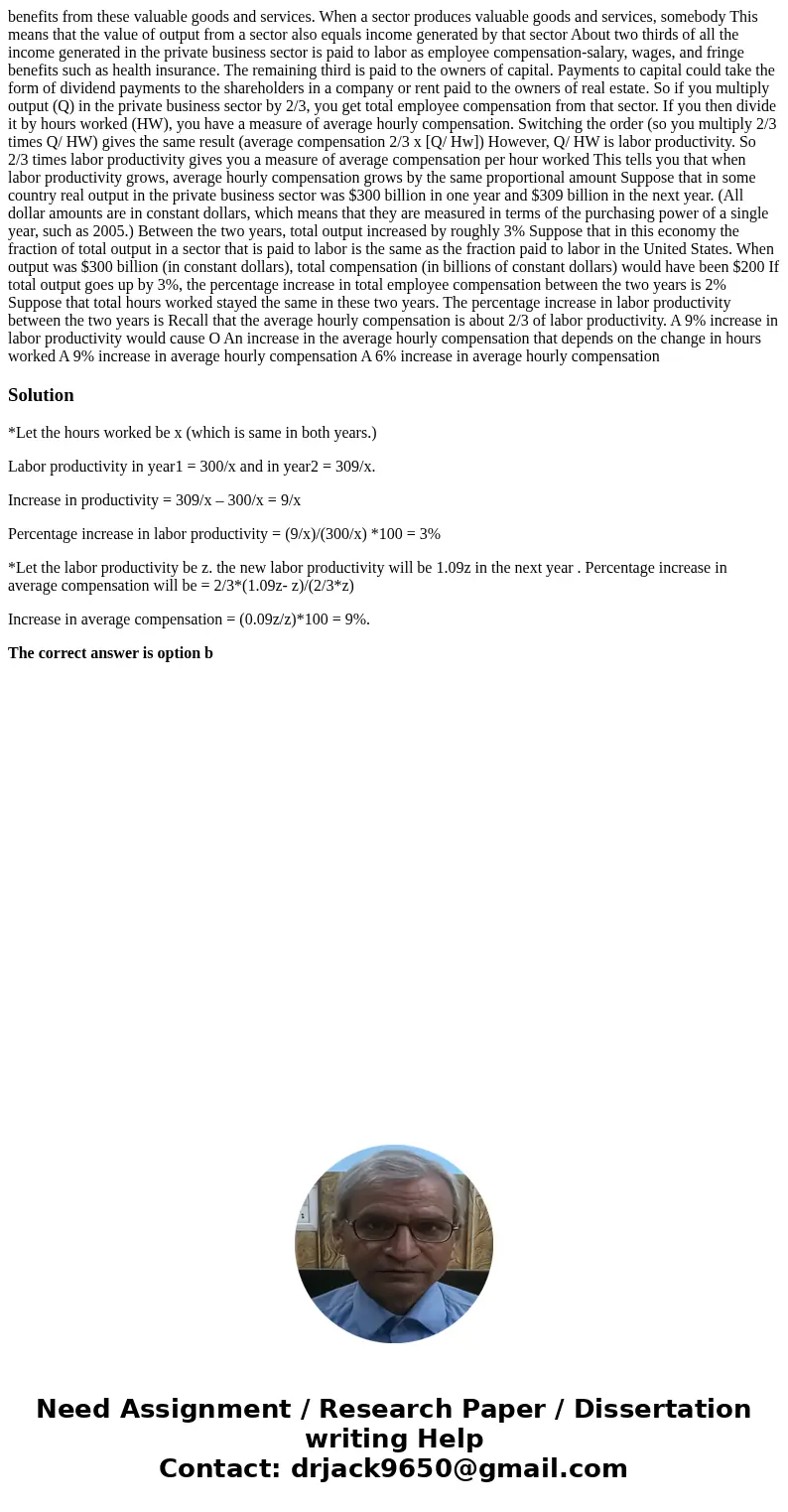benefits from these valuable goods and services When a secto
benefits from these valuable goods and services. When a sector produces valuable goods and services, somebody This means that the value of output from a sector also equals income generated by that sector About two thirds of all the income generated in the private business sector is paid to labor as employee compensation-salary, wages, and fringe benefits such as health insurance. The remaining third is paid to the owners of capital. Payments to capital could take the form of dividend payments to the shareholders in a company or rent paid to the owners of real estate. So if you multiply output (Q) in the private business sector by 2/3, you get total employee compensation from that sector. If you then divide it by hours worked (HW), you have a measure of average hourly compensation. Switching the order (so you multiply 2/3 times Q/ HW) gives the same result (average compensation 2/3 x [Q/ Hw]) However, Q/ HW is labor productivity. So 2/3 times labor productivity gives you a measure of average compensation per hour worked This tells you that when labor productivity grows, average hourly compensation grows by the same proportional amount Suppose that in some country real output in the private business sector was $300 billion in one year and $309 billion in the next year. (All dollar amounts are in constant dollars, which means that they are measured in terms of the purchasing power of a single year, such as 2005.) Between the two years, total output increased by roughly 3% Suppose that in this economy the fraction of total output in a sector that is paid to labor is the same as the fraction paid to labor in the United States. When output was $300 billion (in constant dollars), total compensation (in billions of constant dollars) would have been $200 If total output goes up by 3%, the percentage increase in total employee compensation between the two years is 2% Suppose that total hours worked stayed the same in these two years. The percentage increase in labor productivity between the two years is Recall that the average hourly compensation is about 2/3 of labor productivity. A 9% increase in labor productivity would cause O An increase in the average hourly compensation that depends on the change in hours worked A 9% increase in average hourly compensation A 6% increase in average hourly compensation 
Solution
*Let the hours worked be x (which is same in both years.)
Labor productivity in year1 = 300/x and in year2 = 309/x.
Increase in productivity = 309/x – 300/x = 9/x
Percentage increase in labor productivity = (9/x)/(300/x) *100 = 3%
*Let the labor productivity be z. the new labor productivity will be 1.09z in the next year . Percentage increase in average compensation will be = 2/3*(1.09z- z)/(2/3*z)
Increase in average compensation = (0.09z/z)*100 = 9%.
The correct answer is option b

 Homework Sourse
Homework Sourse